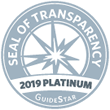A total of 2233 patients with 2758 biopsy reports were available; 26 were excluded, for a final count of 2207. The average age was 48 years (range, 7–92) and 1880 patients (85.2%) were female. Of the 2207 test results, 236 (10.7%) were determined to be nondiagnostic, 1575 (71.4%) benign, 57 (2.58%) atypia of undetermined significance (AUS), 78 (3.53%) follicular lesion of undetermined significance (FLUS), 107 (4.85%) follicular neoplasm or Hürthle-cell neoplasm, 20 (0.9%) suspicious for malignancy, and 134 (6.07%) malignant. Average follow-up after the initial biopsy was 13.9 years (range, 10.5–18.4), and 279 (12.6%) patients were diagnosed with thyroid cancer during that period.
Thyroid cancer was ultimately identified in only a few patients with initially benign biopsies (cancer rate of 2.42 per 1000 person-years). Cancer was diagnosed only twice as often if the biopsy was non-diagnostic, 9 times as often for AUS/FLUS, 11 times as often for follicular neoplasm, and 49 times as often for suspicious for malignancy. Only 52 of the nodules with an initial benign biopsy (1575) ultimately were diagnosed with thyroid cancers and 29 of those were papillary thyroid microcarcinomas, which rarely spread beyond the thyroid. Only 15 patients died from their thyroid cancer and none of these patients had a benign biopsy initially.
WHAT ARE THE IMPLICATIONS OF THIS STUDY?
This study showed that thyroid biopsy and the Bethesda grading system are accurate in detecting thyroid cancer. Long-term follow up showed low rates of cancer in nondiagnostic biopsies. There was an extremely low rate of death when biopsy was benign or non-diagnostic. This information supports our current recommendations regarding handling of thyroid nodules. Patients with benign biopsies are unlikely to eventually need surgery for thyroid cancer. Even patients with non-diagnostic biopsies have a relatively low risk for cancer. The up to date Bethesda system of categorizing thyroid biopsy rarely misses a cancer of significance and patients should be reassured.
— Marjorie Safran



